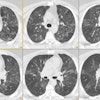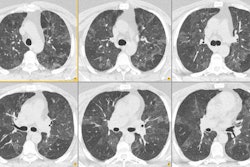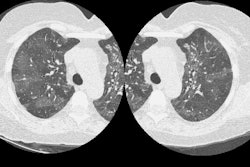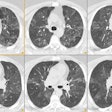J Thorac Imaging 1997 Oct;12(4):232-249. Transthoracic needle biopsy: an overview.
Klein JS, Zarka MA
The parallel development of cross-sectional detection and characterization
of thoracic lesions with advances in biopsy
needle design and increased access to expert cytopathology has led
to an expanded role for image-guided transthoracic
needle biopsy (TNB) in the diagnostic evaluation of thoracic lesions.
There is a growing list of indications for TNB, the
most important of which is the evaluation of a solitary pulmonary nodule.
A key preparatory step in planning TNB is
conducting a preprocedural consultation with the pathologist, which
maximizes the likelihood of a positive diagnostic
outcome. Computed tomography (CT) has rapidly become the guidance modality
of choice for performing TNB. While
TNB is highly sensitive in the diagnosis of carcinoma, methods used
to enhance the diagnostic yield for other neoplasms
and benign conditions include coaxial needle placement for multiple
samplings, selective use of core biopsy needles to
obtain histologic specimens, and the performance of ancillary tests
on the aspirated material. The complications of TNB
are well recognized and include pneumothorax, hemorrhage, and systemic
air embolism. Although the results of recent
cost-analysis studies suggest a central role for TNB in the diagnosis
of the indeterminate lung lesion, the availability and
yield of alternative diagnostic and therapeutic techniques including
positron-emission tomography scanning and
video-assisted thoracoscopic surgery will determine its true utility.






